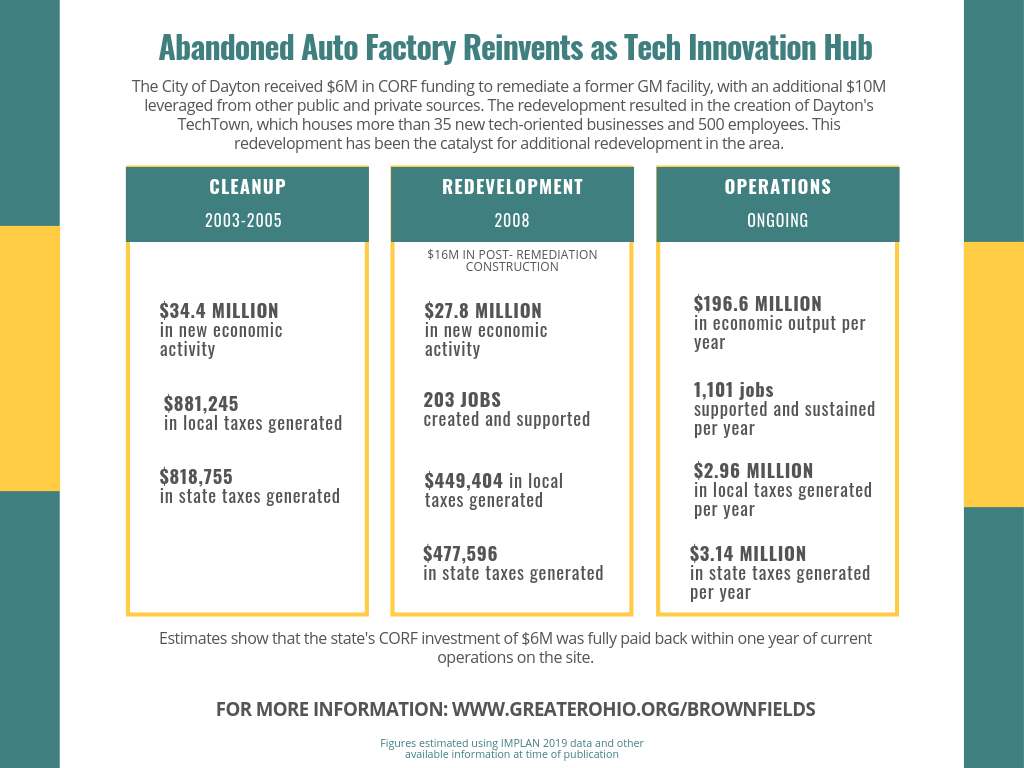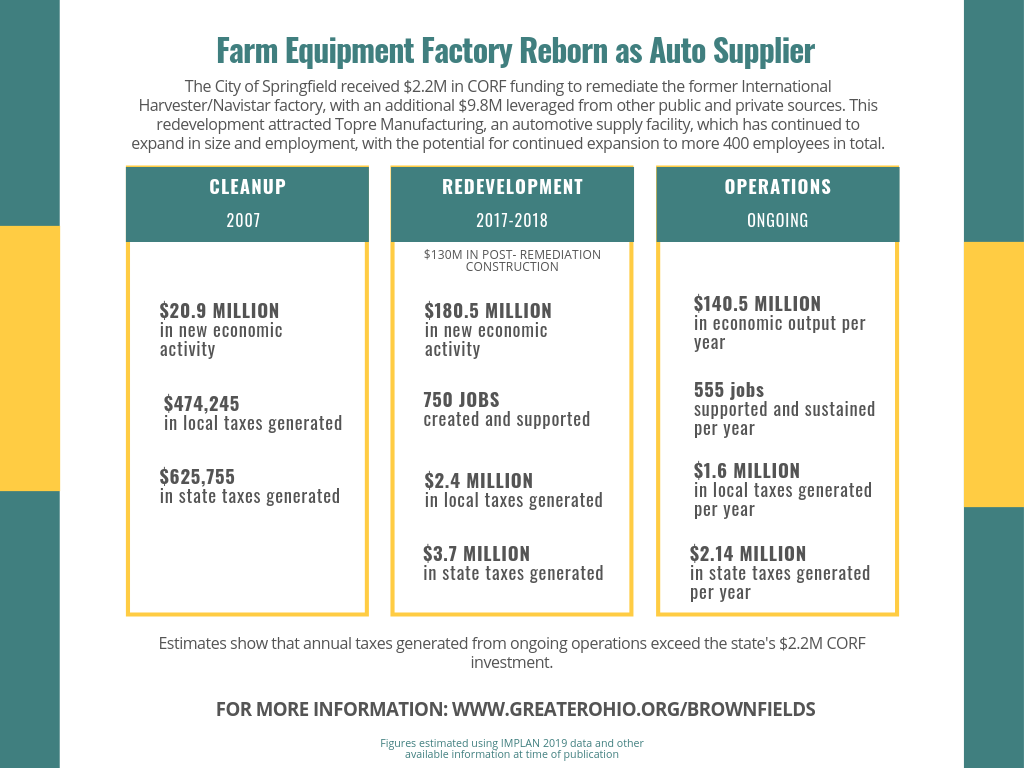
The Clean Ohio Revitalization Fund
Between 2002 and 2013, the Clean Ohio Revitalization Fund (CORF) invested $400 million in catalytic funds to assist communities across the state in the environmental testing and cleanup of contaminated “brownfields.” Local investments complemented state dollars, and local communities were given the flexibility to define the best possible reuse of these sites. The program contributed to the redevelopment of more than 7,600 acres of contaminated land, and placed Ohio as a national leader in brownfields redevelopment.
An Overview of the Clean Ohio Revitalization Fund
The Clean Ohio Fund was approved by Ohio voters in November 2000, authorizing $400 million to support an innovative mix of environmental conservation, preservation, and brownfield revitalization activities throughout the state. Of the $400 million, $200 million went towards brownfield redevelopment through the Clean Ohio Revitalization Fund (CORF), with the remainder divided among green space preservation, agricultural easement purchases, and trail programs. In November 2008, Ohio voters renewed their support for the Clean Ohio Fund, authorizing a further $400 million for the program (funded through bonds backed by the state-owned liquor franchise).
From 2002 until 2013, CORF was jointly administered by the Ohio Department of Development and the Ohio Environmental Protection Agency, awarding grants to municipalities and other public entities such as counties and port authorities, to clean up sites and prepare them for redevelopment with private sector partners. In total, CORF supported the removal and cleanup of more than 160 brownfield sites, investing over $315 million grant dollars.
The CORF program was sunset in 2013 when the state leased the state liquor franchise to JobsOhio, the state-created, privately operated economic development agency. JobsOhio provides loans for brownfield redevelopment which keep with their stated mission of attracting new jobs and keeping and retaining existing jobs in the state. It was not until the creation of the Brownfield Remediation Fund in 2021 that the state of Ohio once again provided direct assistance to local governments for brownfield clean up and redevelopment activity.
That same year, Greater Ohio Policy Center (GOPC) completed the first analysis of the statewide economic impacts of public investment in brownfield sites. “Investing in Brownfields: The Economic Benefits of the Clean Ohio Revitalization Fund” reviewed 21 projects that resulted in a net positive value for the state’s investment, producing $1.16 billion in one-time contributions and $1.4 billion in annual contributions to the state GDP. Additional findings from the report included:
Goods and services related to predevelopment alone produced a return on investment of $4.67 in new economic activity for every one dollar spent by the Program on the 21 Projects.
For every job created or sustained through activities directly tied to a remediated brownfield, more than one additional job was indirectly created or sustained by the 21 Projects.
Predevelopment and construction activities in the 21 Projects created more than $360 million in household and business earnings, while ongoing project operations produce almost $500 million in household and business earnings annually.
The 21 Projects annually generate $55 million in state and local taxes and were responsible for an additional $42 million in one-time state and local taxes.
Brownfield Success Stories
When a sustained, flexible statewide funding program for brownfield redevelopment is available, communities across the state experience economic development that can lead to jobs, increased tax revenue, business development, and new housing. To understand the economic impacts that economic development has when a statewide brownfield program exists, check out the in-depth case studies from across Ohio. These projects (below) saw public and private partnerships to enhance communities across the state.



The Impact of CORF-Assisted Projects Across Ohio
The map below highlights where CORF-assisted investments were made between 2002 and 2013. As you can see, communities across the entire state felt the benefits of a statewide funding source - with many private partners assisting with projects.







